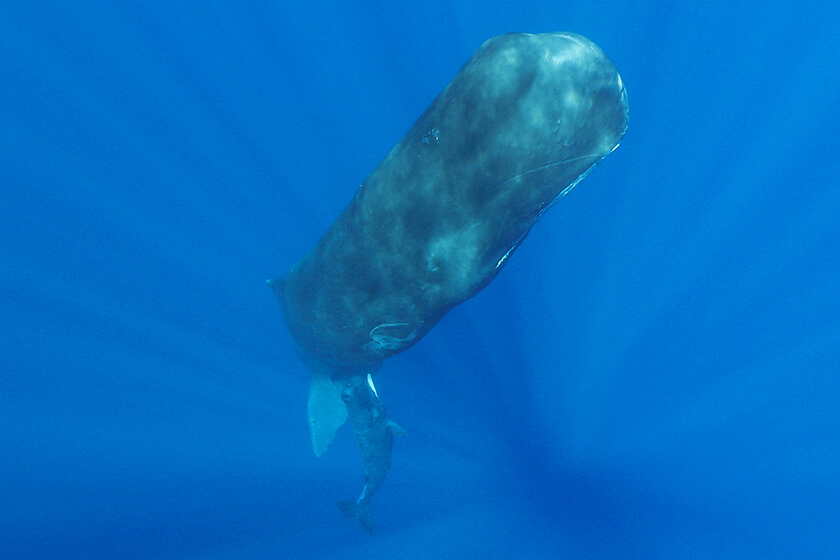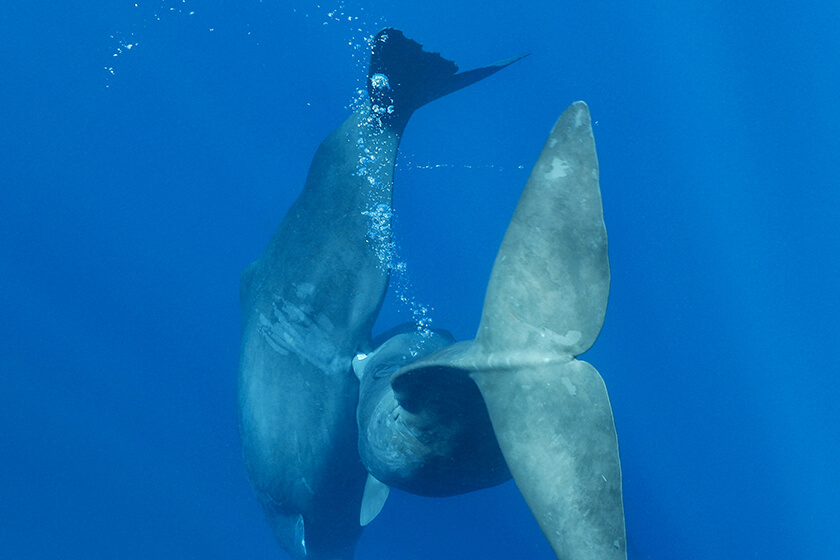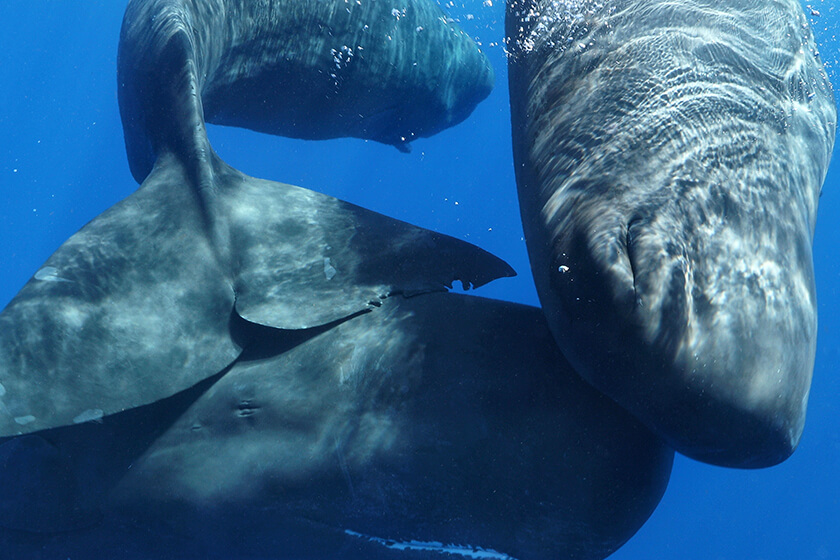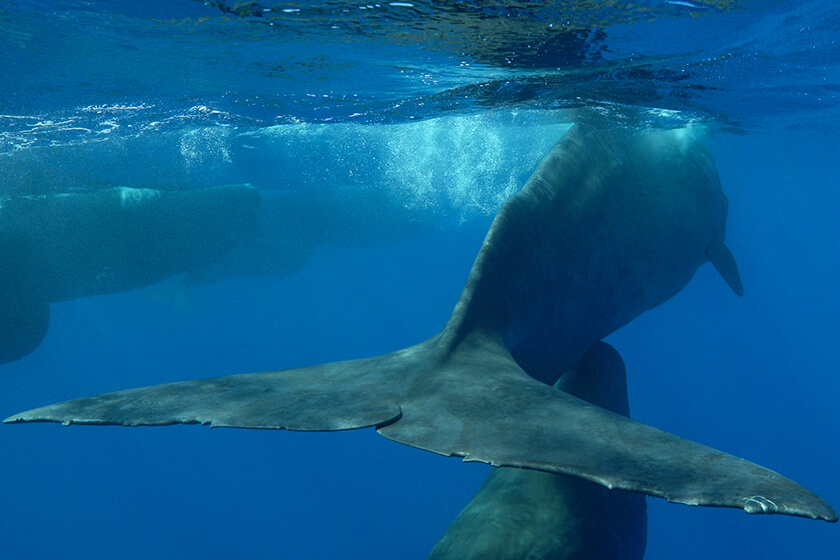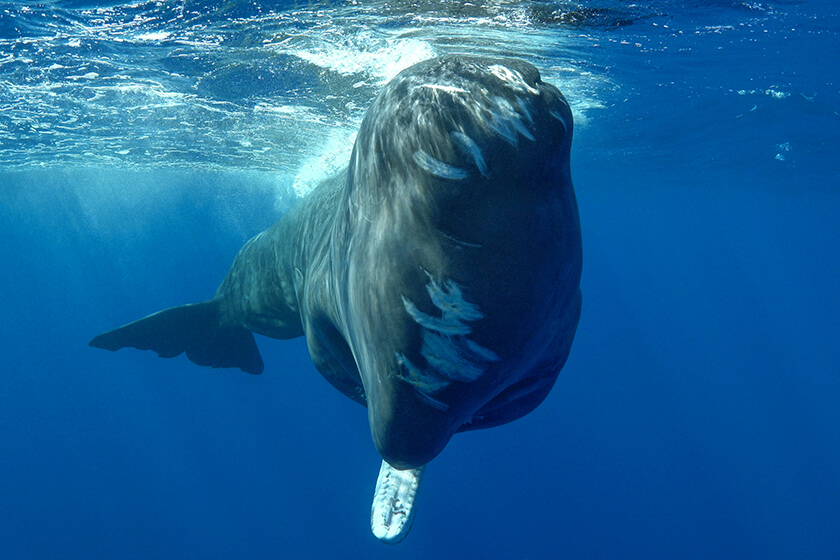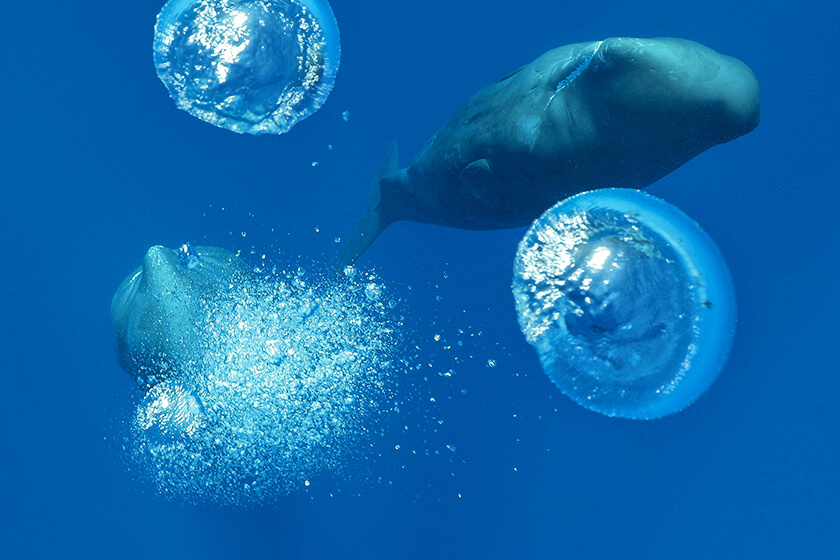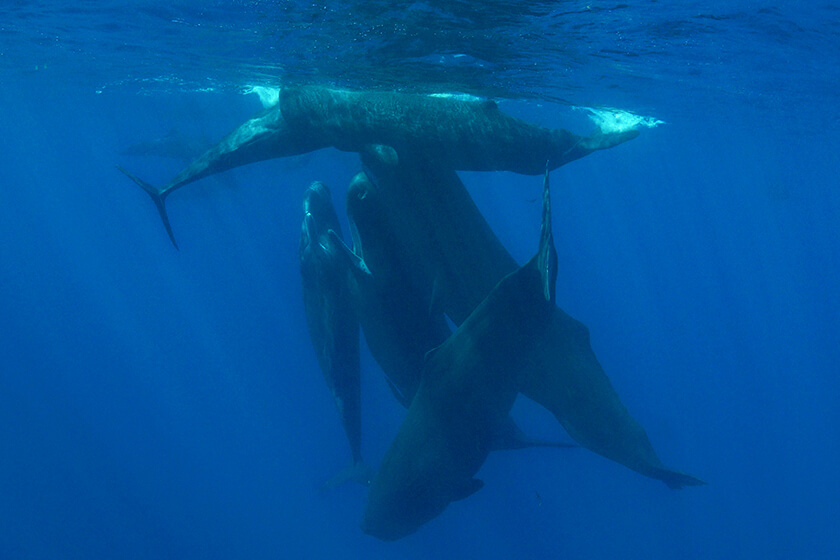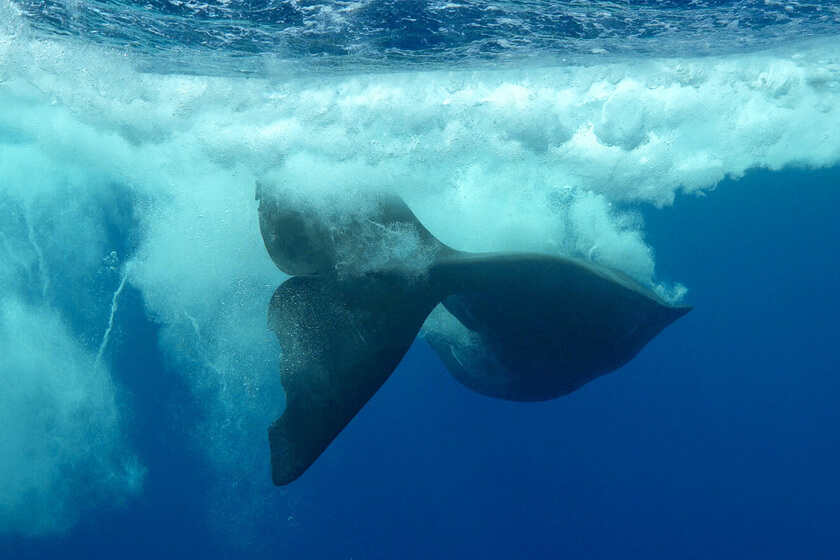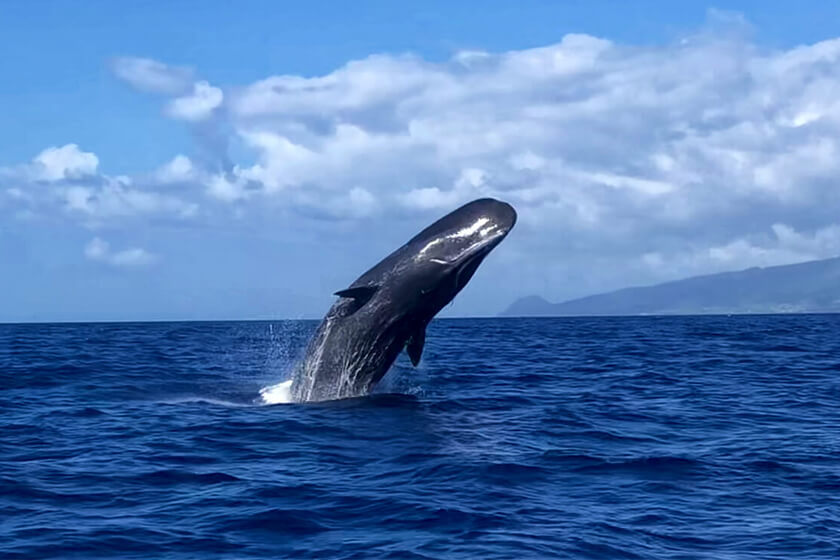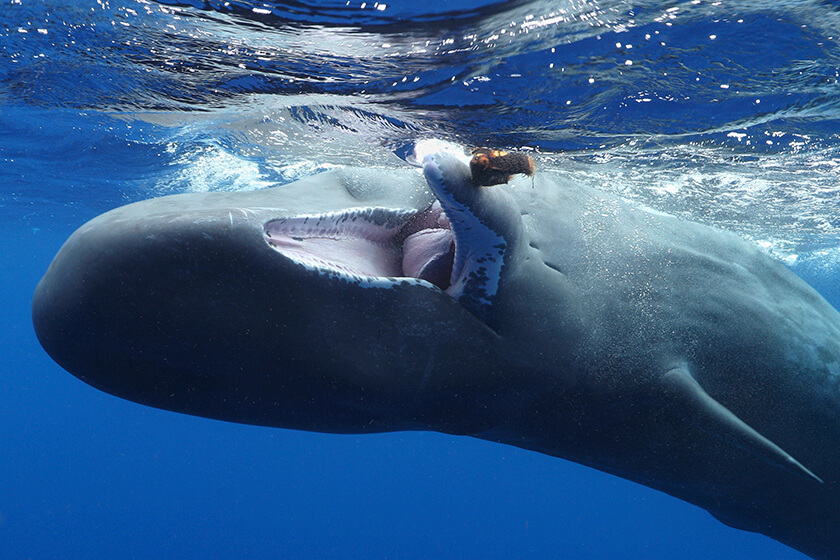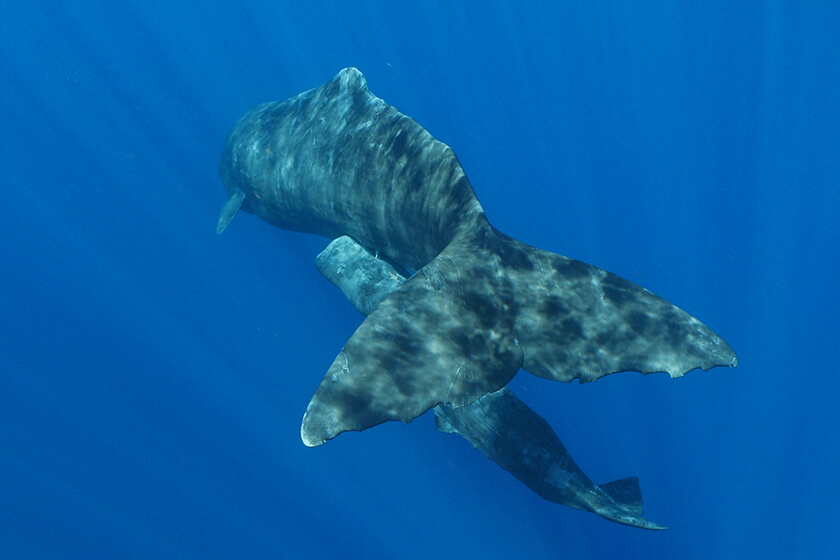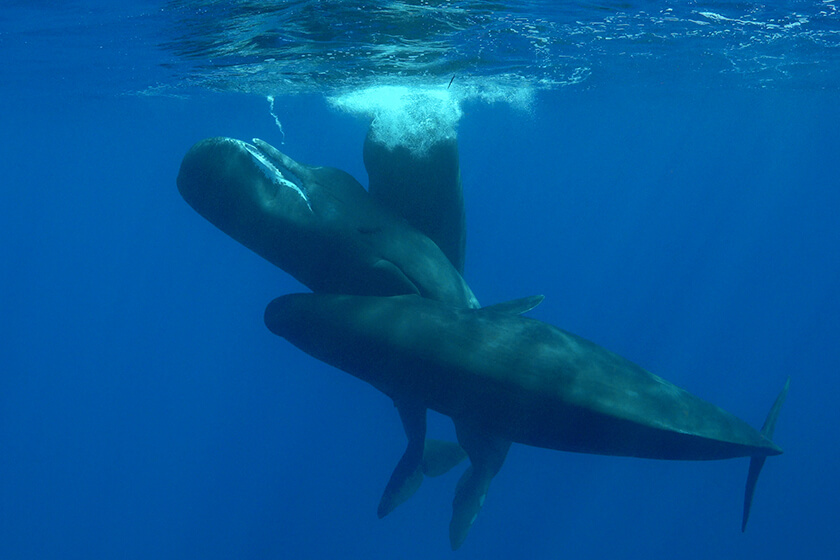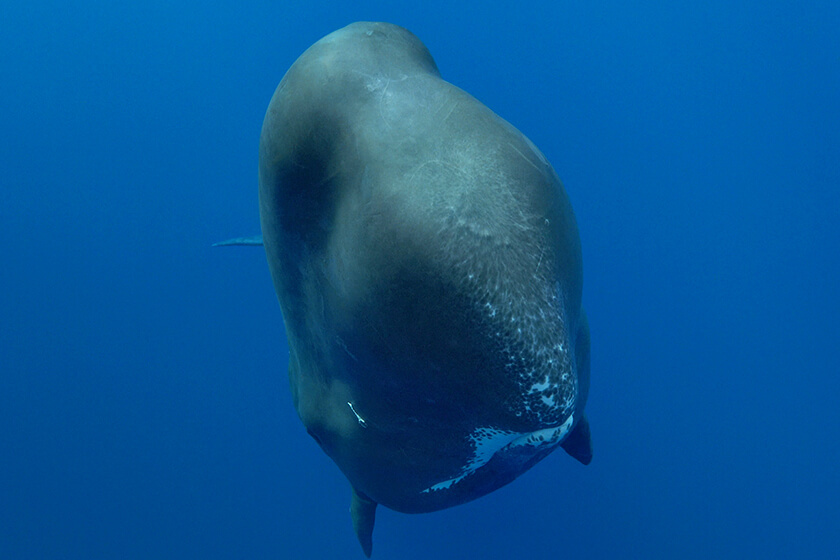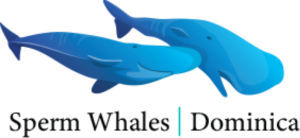Behaviors: Nursing
One of the most precious and intimate behaviors that occurs among family members is the act of nursing their young. We have been privileged to witness and capture footage of several calves from the different social units nursing from their mothers and caretakers.
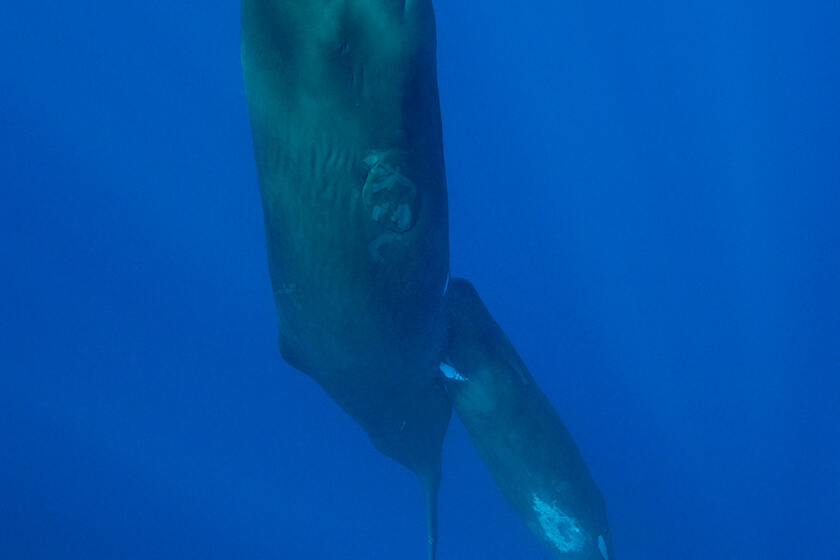
Soursop and Ariel
Sperm whale calves typically nurse for about 4 – 5 years before transitioning to a solid food diet. Some calves nurse for much longer, gradually decreasing their dependency on their mothers’ milk as they build the strength, skill, and deep-diving abilities required to hunt for their food.
In addition to providing nourishment, nursing serves to strengthen the bonds between adult whales and their offspring. The calves in Dominica may be up to 8 years old before they are fully weaned. Mothers do not get pregnant again until they stop feeding their young and their existing calves are more mature. Sperm whales give birth every 4 – 20 years.
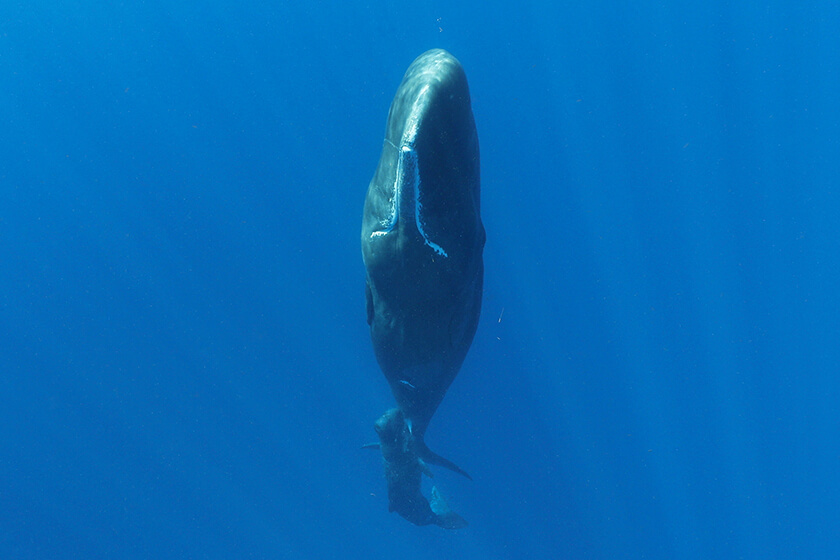
Atwood and calf
Nursing habits differ among social groups. In some units the calves suckle exclusively from their mothers, while other groups engage in cross or wet-nursing whereby females provide alloparental care for calves who are not their own. Cross-nursing occurs most frequently with adult females who are more closely related to the calves. The flexibility afforded by communal calf-rearing can be seen among members of Unit A.
Lactating females will often feed the calves while they are resting in a vertical position, either with their nose up or nose down, however they may also nurse while on the move. When swimming on the surface, a mother-calf duo will arch and make a shallow dive together with the calf immediately alongside the mother’s peduncle. After the ‘peduncle dive’ the calf will soon begin suckling.
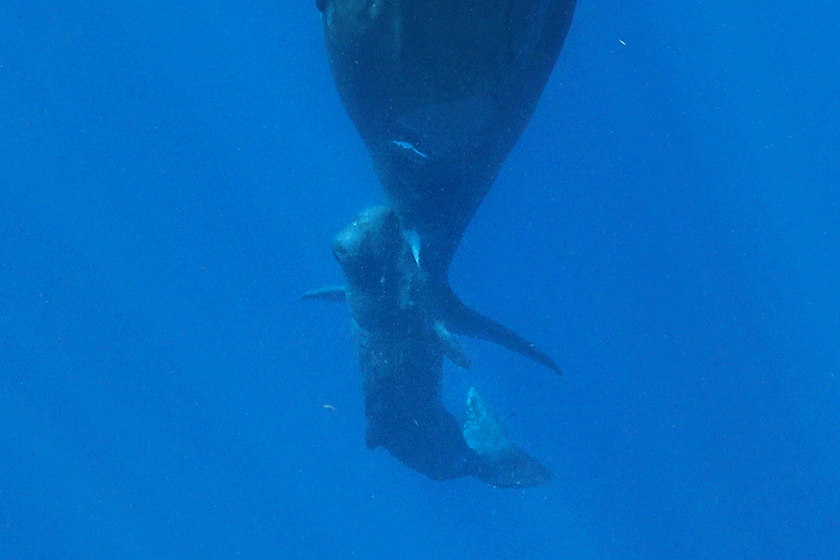
Atwood's calf nurses
To begin the process of suckling a calf will rub or bump their nose against the underbelly and mammary area of the lactating female. This mammary bump induces the let-down of milk for voluntary ejection into the mouth of the calf. The lactating whales’ nipples are inverted and reside inside two mammary slits. The calf inserts the lower portion of their jaw into one of the slits and wraps their tongue around the nipple to begin suckling.
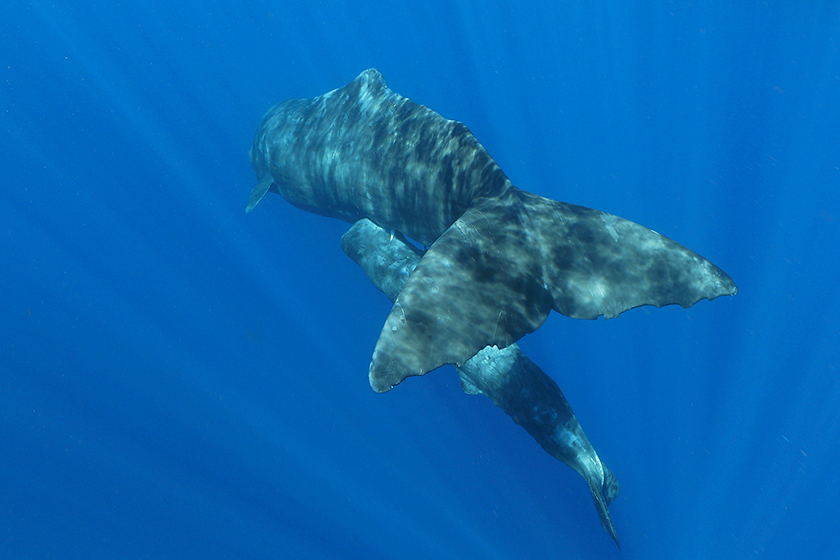
Lady Oracle and calf
Nursing occurs in relatively short suckling periods due to the limited breath-hold capabilities of the calves. Thus far in our research we have observed calves suckling for 1 – 2 minutes at a time. To compensate for quicker nursing periods, the milk is extremely rich in fats and nutrients.
Baby whales are believed to consume between 2 – 10% of their body weight in milk each day.
